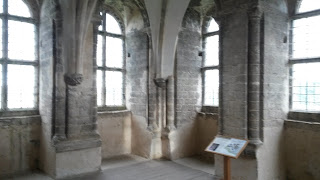Carole and I arrived at Ringwood in the New Forest on Sunday 28th February 2016. We were a little earlier than expected so we drove around the New Forest and came upon a raptor centre. We thought it would be a grand way of killing a few hours before checking into our room above a restaurant in Ringwood town.
As we went into the raptor centre a falconry display was going on. We caught the tail end of a falcon or hawk of some sort. As we sat down, the falconer brought out a Turkey vulture. He said this particular bird was from all across the Americas. It flies at ten thousand feet and can smell and spot a rotting carcase at many miles. Many birds of prey rely on their keen eyesight and some have little sense of smell. The Turkey vulture is an exception to this rule. Its sense of smell is well developed and it has huge nostrils. Its eyesight is not as sharp as most birds of prey, yet it is still much keener than human vision.
After the Turkey Vulture went back to the compound, the falconer brought out two Eurasian Eagle Owls. The larger one was a female with pointed ears. The smaller one was a male with ears that were a little less pointed than the female counterpart. The falconer spoke a lot of these birds of prey. He said that the two were bonded as friends but would not mate. He went on to say that this is common among owls. Sometimes the female likes the male and will mate. On other occasions, she will bond and tolerate the male, though not mate.
When a male Eurasian owl tries to woo a female of the same species, he will bring an offering. Something like a dead rodent. If the female accepts, she may well go on to mate with the male. If she rejects the offering, she may attack and try to eat the male. It depends on how the female is approached and if she likes the look of the male.
As said previously, sometimes the female will bond in a way of tolerance of the male without actually mating and producing offspring. How this gets passed the rejection of approach and passed trying to eat the rejected male to bonding; I don’t really know. I just took the falconry expert’s word for it. As one can see from the pictures. They are magnificent birds of prey.
Another thing he told us was concerning the wise old owl with huge knowing eyes. He said this is a myth and that all owls are rather stupid and dim on the intellect scale. Their brains are small compared to their advanced eyesight.
 |
| Hawk or Falcon |
 |
| Hawk or Falcon as we entered raptor centre |












































